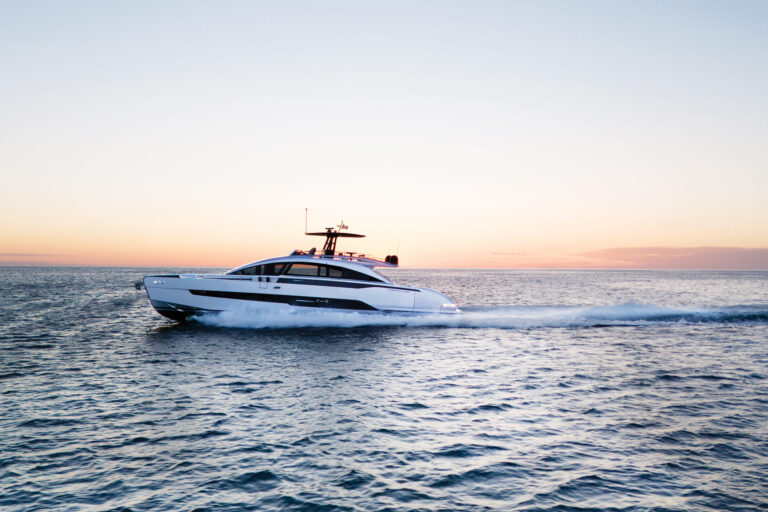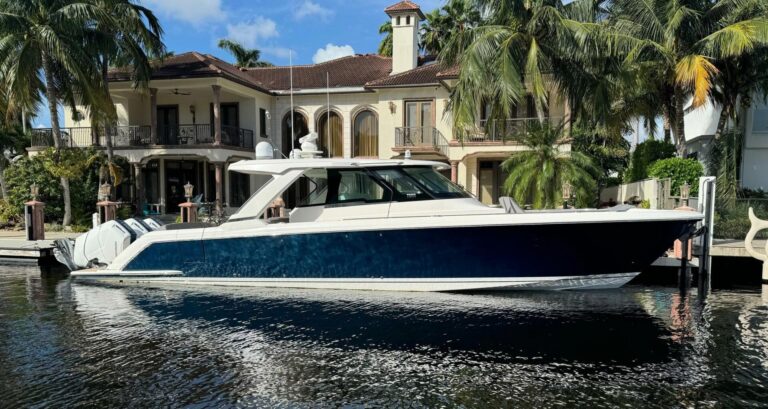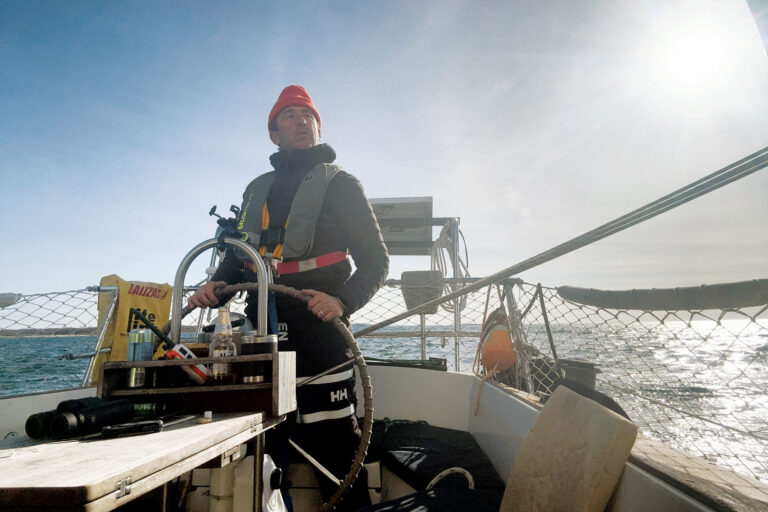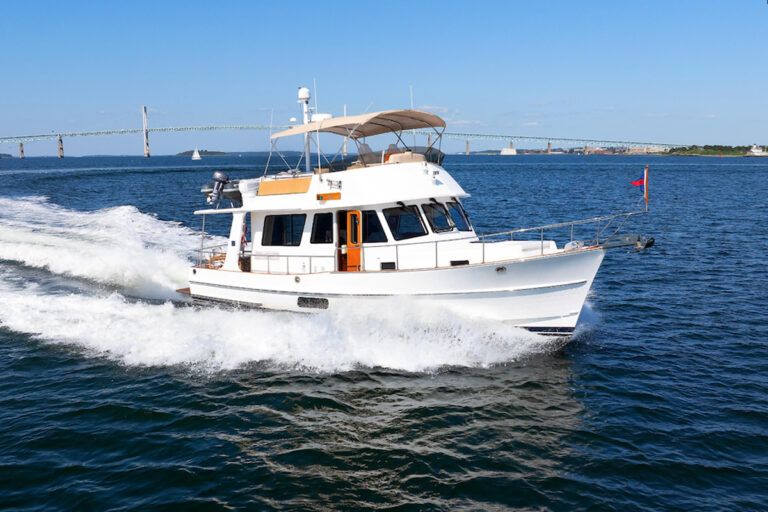It’s a vision thing. The sea is full of challenges, and your eyes are the first line of defense against them. That’s why vision tools are at least twice as important at night.
Binoculars are where you want to start. The right binoculars can be even more helpful at night because they gather and magnify light. Marine binoculars are typically 7×50. Without going into the math, 7×50 glasses are about four times brighter than more compact 8x30s or 7x25s, and twice as bright as 10x50s.
Quality optics and careful design also produce clearer, brighter images, but antireflective lens coating enhances a binoculars’ light transmitting efficiency even more. “If untreated, the multiple lenses and prisms in binoculars reflect back about 30 percent of the light taken in, explains Greg Chevalier of Nikon, binocular makers for 30 years before venturing into the camera business. Common magnesium fluoride coatings typically allow 80 percent of the light through to the users’ eyes, but top-shelf glasses such as Nikon and Steiner marine binoculars let through 90 percent to 95 percent. Another benefit of 7×50 binoculars is that “the image leaving the eyepiece is about 7 millimeters, explains Chevalier. “It is the same diameter as a human eye pupil in low light. As magnification grows or the objective lens shrinks, this “exit pupil gets smaller, which is fine in the daytime when our eyes constrict, but far less efficient at night.
Other features are a matter of preference and convenience. Most marine binoculars are individual-focus models that actually rely on users’ eyes to focus; the name derives from dual-adjustable eyepieces that compensate for each person’s vision. While some prefer manual or center-focus binoculars, claiming they are easier on the eyes, having to continually focus makes scanning the horizon more difficult. Adjustments on either type of binoculars compensate for myopia or hyperopia, but won’t correct astigmatism. Wearing eyeglasses with binoculars solves all three problems.
Many binoculars include a compass that can be matched up to the bearing of a radar target and can help two people identify the same distant object. Rather than a traditional magnetic compass, Steiner’s Commander Digital binoculars include an electronic fluxgate compass that can be adjusted to match true-north plotter and radar headings, and also record compass bearings for future reference. All navigation binoculars should be waterproof and nitrogen-purged to eliminate fogging and allow a gentle rinse when salty.
For magnification beyond the traditional 7-power marine binoculars, electrically stabilized marine binoculars compensate for movement, and are available in 12, 14, even 18 times magnification. Stabilized binoculars won’t eliminate the motion of pitching and rolling in a sea, but they will compensate for minor bouncing in high-speed boats, and the hand shake that plagues high-magnification binoculars even on land. Stabilized binoculars cannot distinguish between unintentional movement-a wave-from intentional change-panning to watch a bird or fast-moving boat. This can be a bit disorienting. Nikon’s StabilEyes reduce this problem by changing from five-degree to half-degree compensation at will. Fujinon’s 14×40 stabilized binoculars offer fixed 5-degree compensation, and Canon’s models feature larger objective lenses for better low-light use, with only one-degree stabilization.
Military-style night-vision monoculars or binoculars electrically amplify ambient light and project it onto a phosphor screen for viewing. While night vision gear has become quite affordable, Tom Walsh of Night Owl Optics warns, “You really have to be careful what you’re buying. Higher-priced units should employ newer technology, but some retailers are “making some pretty outrageous claims, he says. Least expensive Generation I equipment only increases light 500 fold, but offers crisp images, and might be fine near the coast where there is plenty of ambient light. More expensive Gen II products amplify light about 10,000 times but at lower resolution, while the newest Gen III units are 30,000 to 40,000 times brighter than the eye and provide sharp images.
Conventional night vision gear intensifies reflected star, moon or manmade light, while infrared thermal imaging equipment reads residual heat radiated from an object, showing differences of just one-tenth of a degree and therefore working on the darkest of nights, with some ability to penetrate fog. “While infrared is better for finding or avoiding objects, it shows only heat outlines. Light intensification gear is often better for identifying objects, explains Todd Moore of Night Vision Technologies. The Texas-based company mounts up to three cameras, infrared, Gen III night vision and color video, into a “spotlight housing, always providing the right tool for the job. Hand-held infrared units are available, too, essentially small IR cameras built into a palm-size video camera housings. “Aeration changes water’s infrared emissivity, says Bill Dupre of Infrared, Inc., “so prop wash and breaking waves can be seen with infrared equipment. Fishermen take note: The newest infrared units work well in daylight too, detecting small floating objects much farther than the naked eye can.
Coast Guard helicopter pilot Brian Willson uses his HH 60 Jayhawk’s infrared camera to pick up objects afar, but prefers night-vision goggles for close work. His caveat: Night vision and infrared equipment produce electronic images with no sense of depth, which can be deceptive and dangerous. Binoculars, on the other hand, magnify visual images independently to each eye, and therefore impart depth perception. A smart captain will use all available navigation tools, including the best of them all: the unaided human eye.
Night Vision Technologies NVTi 4200: You don’t have to decide which is better, infrared thermal cameras or light-intensifying night vision imagers, if you choose Night Vision Technologies’ 4000 series. It includes both IR and Gen III night vision, plus a color or low-light black-and-white camera mounted in a spotlight housing controlled from the bridge-always providing the right tool for the job. $50,000 to $90,000; www.nvti-usa.com
Infrared, Inc. Recon XT: Infrared imaging shows the heat signature of an object, whereas traditional night vision gear amplifies reflected starlight. Though each system has its own advantages, like everything else electronic, infrared imaging has been miniaturized. This palm-sized unit will work on the darkest of nights, and even offers some ability to penetrate fog. The newest IR equipment can also be used in daylight to spot heat from floating objects that are otherwise difficult to see. $8,500; www.infrared.com
Steiner Navigator Pro 7×50: With just the right magnification to use on a moving boat and ideal optics for low-light conditions, 7×50 binoculars have long been the standard for marine glasses. This model from Steiner includes a compass, helpful for identifying radar targets. $599; www.steiner-binoculars.com
Nikon StabilEyes 16×32 IS: Seven-times magnification is considered the maximum power for ordinary binoculars; any higher makes the image difficult to hold still at sea. But stabilized binoculars electronically compensate for movement, allowing much higher magnification. This compact 16-power unit from Nikon is waterproof, and its built-in gimbaled servos run on just two AA batteries. $849.95; www.nikondownload.com
Swarovski SLC “New” 7×50: Renowned makers of crystal figurines, Swarovski since 1935 has also produced optical lenses. While Swarovski’s binoculars are popular among birders and astronomers, this model marks its recent entry into the marine market. Note the sleek, ergonomic design, large center-focus knob and precision-adjustable eye relief. $1,665.57; www.swarovskioptik.at





